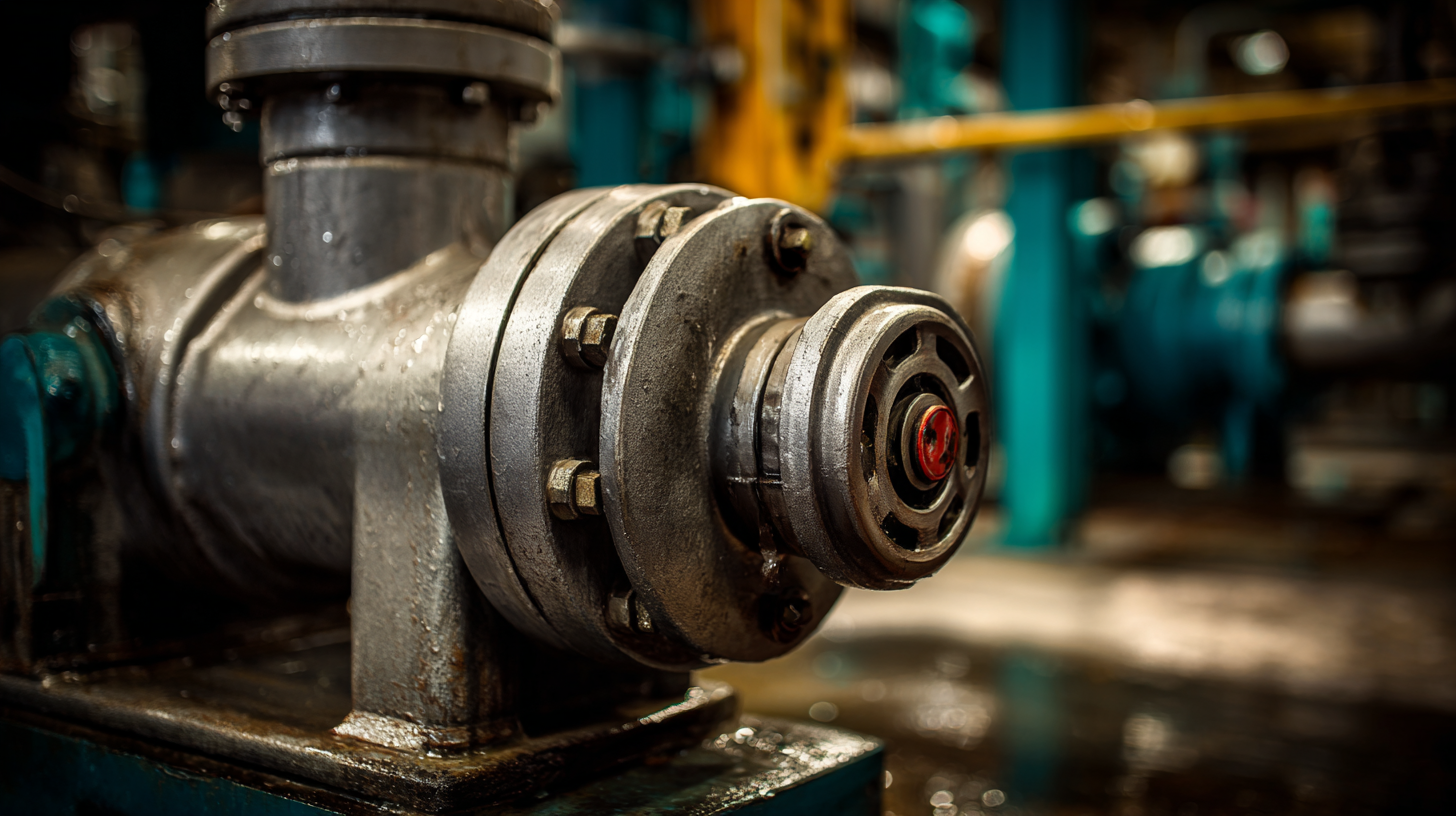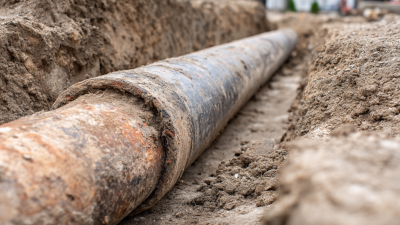How to Identify Common Symptoms of Pump Issues Before Calling for Repair
In the realm of industrial machinery, maintaining operational efficiency is paramount, and understanding the symptoms of pump issues plays a critical role in ensuring timely pump repair. According to a report by the Hydraulic Institute, nearly 70% of pump failures are attributed to improper maintenance and early signs of dysfunction that go unaddressed. Recognizing symptoms such as unusual noise, vibrations, or fluctuating pressures can prevent costly downtime and extensive repairs. Moreover, the U.S. Department of Energy states that nearly 20% of the energy consumed in industrial processes is used by pumping systems, emphasizing the need for vigilance in their upkeep. By familiarizing yourself with these common indicators of pump malfunction, you can act proactively, potentially saving thousands in repair costs and enhancing the longevity of your pumping systems. Identifying these warning signs early can streamline the pump repair process, ensuring that operations continue smoothly and efficiently.

Understanding the Importance of Early Detection for Pump Issues
 Early detection of pump issues is critical in preventing extensive damage and costly repairs. Understanding the common symptoms of pump malfunctions can save time and money. When you notice unusual sounds, abnormal vibrations, or changes in flow rates, it’s essential to address these signs immediately. Promptly identifying these symptoms will not only help in maintaining equipment efficiency but also extend the lifespan of your pump.
Early detection of pump issues is critical in preventing extensive damage and costly repairs. Understanding the common symptoms of pump malfunctions can save time and money. When you notice unusual sounds, abnormal vibrations, or changes in flow rates, it’s essential to address these signs immediately. Promptly identifying these symptoms will not only help in maintaining equipment efficiency but also extend the lifespan of your pump.
Tips for Detection:
1. Regularly monitor the sound level of your pump during operation. If it starts making strange noises, this could indicate an internal problem that requires attention.
2. Check for vibrations. A significant increase in vibration can signal misalignment or wear, which should be investigated as soon as possible.
3. Keep track of flow rates. If you notice a drop in flow or pressure, it may suggest a clog or a failing component, and early intervention is crucial.
By being proactive and informed, you can ensure smooth operation and minimize potential pump failures. Early action not only safeguards your investment but also enhances the reliability of your pumping systems.
Recognizing Unusual Noises as Signs of Pump Malfunction
Unusual noises from a pump can be one of the most telling signs of impending malfunction, often indicating issues such as misalignment or cavitation. According to a report by the Hydraulic Institute, approximately 70% of pump failures are attributed to improper maintenance, making it essential for operators to recognize these auditory cues early. A grinding, whining, or hissing sound can signal mechanical defects or worn components. It’s crucial to stay attentive to these changes to prevent costly breakdowns and extended downtime.
**Tip:** Regular maintenance checks should include listening for irregular sounds. If a pump starts emitting new or unfamiliar noises, consult the equipment manual to identify potential causes and consider reaching out for a professional assessment.
In addition to listening for unusual sounds, monitoring vibrations can also provide insight into pump health. The American Society of Mechanical Engineers states that excess vibration can indicate imbalances or wear within the pump system. Implementing vibration analysis as part of routine inspections can help in detecting problems before they escalate, allowing for a proactive approach to repairs.
**Tip:** Schedule periodic vibration analysis to compare current readings with historical data, helping to pinpoint anomalies that might suggest future failures.
How to Identify Common Symptoms of Pump Issues Before Calling for Repair - Recognizing Unusual Noises as Signs of Pump Malfunction
| Symptom | Description | Possible Cause | Priority Level |
|---|---|---|---|
| Unusual Noises | Banging, grinding, or whistling sounds when the pump operates. | Worn bearings or loose components. | High |
| Vibration | Excessive shaking or movement of the pump. | Misalignment or imbalance. | Medium |
| Reduced Flow | Significantly lower output than normal. | Clogged filters or intake. | High |
| Leakage | Water or fluid pooling around the pump. | Damaged seals or fittings. | High |
| Overheating | Pump feels excessively warm to the touch. | Low fluid levels or lack of lubrication. | Medium |
Identifying Changes in Fluid Flow and Pressure Patterns
When dealing with pump issues, one of the most critical aspects to monitor is fluid flow and pressure patterns. Significant changes in these parameters can indicate underlying problems that, if identified early, may prevent more extensive damage and costly repairs. A sudden drop in fluid flow might suggest blockages within the system, such as clogged filters or impellers. Conversely, an unexpected increase in flow could indicate a leak or a malfunctioning valve, which may compromise the system’s integrity.
Moreover, monitoring pressure patterns is equally vital. Fluctuations in pressure readings often signal mechanical failures or wear and tear on the components. Consistent pressure may indicate a healthy pump, while erratic readings can point to issues such as cavitation or air entrapment, affecting the efficiency of the pump. By regularly checking these parameters, operators can catch early signs of pump dysfunction before they escalate into major repairs, ensuring the smooth operation of the entire system.
Monitoring Temperature Fluctuations in Pump Systems
Temperature fluctuations in pump systems can be a significant indicator of underlying issues that may require attention. Monitoring the temperature is crucial because deviations from the normal operating range can signal problems such as bearing wear, improper lubrication, or even casing failures. For instance, an increase in temperature may indicate excessive friction due to lack of lubrication or an overloaded pump, while a significant drop could suggest a malfunctioning thermocouple or other sensor issues.
By regularly checking the temperature readings, operators can detect these anomalies early on, preventing potential breakdowns or costly repairs. Implementing a systematic approach to temperature monitoring involves using thermometers or infrared sensors strategically placed around critical components of the pump system. Additionally, keeping a log of temperature variations can help identify trends over time, allowing for a proactive maintenance strategy rather than waiting for a significant issue to arise. This vigilance not only enhances the longevity of the pump but also contributes to the overall efficiency of the system.
Assessing Vibration Levels for Potential Pump Failures
 Assessing vibration levels is a crucial step in identifying potential pump failures before they escalate into costly repairs. According to a report by the International Society of Automation, nearly 40% of mechanical failures can be attributed to improper vibration management, making it essential for maintenance teams to monitor these levels regularly. Pumps operating in normal conditions typically exhibit vibration levels below 4 mils (0.1 mm), while readings above this threshold may indicate misalignment, imbalance, or other mechanical issues.
Assessing vibration levels is a crucial step in identifying potential pump failures before they escalate into costly repairs. According to a report by the International Society of Automation, nearly 40% of mechanical failures can be attributed to improper vibration management, making it essential for maintenance teams to monitor these levels regularly. Pumps operating in normal conditions typically exhibit vibration levels below 4 mils (0.1 mm), while readings above this threshold may indicate misalignment, imbalance, or other mechanical issues.
Furthermore, the vibration analysis can provide insights into specific faults within the pump system. The National Board of Health and Welfare suggests that analyzing frequency patterns can help detect problems such as cavitation or bearing wear. Monitoring systems that integrate vibration sensors can significantly increase the likelihood of early detection, potentially saving industrial operators an estimated 20-30% in maintenance costs, according to a study conducted by the American Society of Mechanical Engineers. By prioritizing vibration assessment within preventive maintenance programs, facilities can extend pump life and enhance operational efficiency.
Related Posts
-

Comprehensive Pump Repair Checklist for Efficient Plant Operations and Reduced Downtime
-

Creative Applications of Sewer Pipe Sleeve Repair Techniques
-

7 Essential Tips for Effective Home Sewer Line Repair You Can't Ignore
-

Ultimate Guide to Well Casing: Key Specifications and Industry Insights for Optimal Performance
-

How to Effectively Address Sewer Line Issues without the Need for Excavation
-

7 Essential Tips for Effective Sewer Pipe Sleeve Repair Techniques

